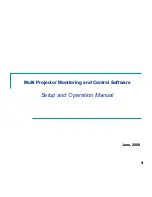
Diffie-Hellman Based Key Management
3-4
Oracle Database Advanced Security Administrator's Guide
■
Data modification attack
This type of attack occurs when an unauthorized party intercepts data in
transit, alters it, and retransmits it. For example, if a bank deposit of $100 is
intercepted, the monetary amount is changed to $10,000, and then the higher
amount is retransmitted, then that is a data modification attack.
■
Replay attack
This type of attack occurs when an entire set of valid data is repetitively
retransmitted. For example, if a bank withdrawal of $100 is intercepted and
then retransmitted ten times so the final withdrawal amount equals $1,000, then
that is a replay attack.
Data Integrity Algorithms Supported
Oracle Advanced Security lets you select a keyed, sequenced implementation of the
Message Digest 5 (MD5) algorithm or the Secure Hash Algorithm (SHA-1) to
protect against both of these forms of attack. Both of these hash algorithms create a
checksum that changes if the data is altered in any way. This protection operates
independently from the encryption process so you can enable data integrity with or
without enabling encryption.
Diffie-Hellman Based Key Management
The secrecy of encrypted data depends upon the existence of a secret key shared
between the communicating parties. A key is a secret exclusively shared by parties
on both sides of a connection. Without the key, it is extremely difficult
(computationally infeasible) to decrypt an encrypted message or to alter a
cryptographic, checksummed message without detection. Providing and
maintaining such secret keys is referred to as key management.
Secure key distribution is difficult in a multiuser environment. Oracle Advanced
Security uses the well known
Diffie-Hellman key negotiation algorithm
to
perform secure key distribution for both encryption and data integrity.
When encryption is used to protect the security of encrypted data, keys must be
changed frequently to minimize the effects of a compromised key. Accordingly, the
See Also:
■
"Configuring Integrity on the Client and the Server"
on
page 3-11.
■
Table 3–3, "Valid Integrity Algorithms"
on page 3-13.
Summary of Contents for Database Advanced Security 10g Release 1
Page 17: ...xvii ...
Page 20: ...xx ...
Page 24: ...xxiv ...
Page 42: ...xlii ...
Page 44: ......
Page 102: ......
Page 124: ......
Page 246: ...Managing Certificates 8 28 Oracle Database Advanced Security Administrator s Guide ...
Page 284: ......
Page 384: ......
Page 414: ...Physical Security D 6 Oracle Database Advanced Security Administrator s Guide ...
Page 518: ...Index 10 ...
















































